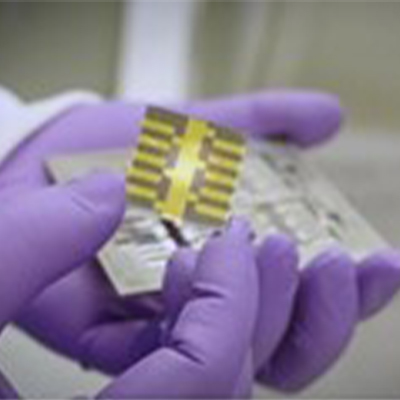
The X-ray detector is one application of devices that rely on crystals incorporating the mineral perovskite instead of the silicon found in most conventional detectors. The Los Alamos prototypes offer a hundred times greater sensitivity than conventional silicon-based detectors. Unlike their silicon cousins, the perovskite versions don’t require an outside power source — instead the energy of the X-rays themselves is enough to run the detectors.
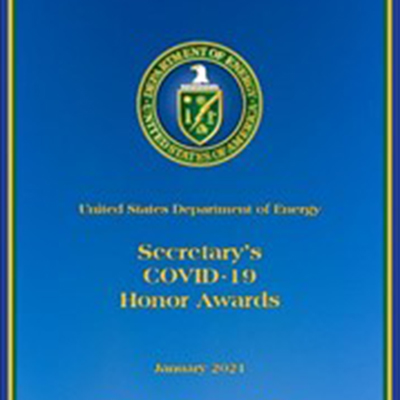
CINT staff named in the United States Department of Energy
Secretary’s COVID-19 Honor Awards
The Department of Energy Secretary’s Honor Awards formally recognize the outstanding achievements of individuals and teams who have gone above and beyond in fulfilling the Department’s mission and serving the Nation.

Scientific Achievement: This work reveals unique exciton trapping potential landscape of ssDNA-patterned SWCNTs and provides the first demonstration of coupled quantum defect-states in nanotubes.
Significance:
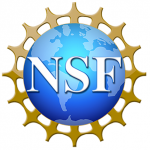
CINT User Heayoung Yoon awarded NSF CAREER project.
Prof. Yoon has been a CINT user researching local probing of emerging materials for electronics and photonics since she joined The University of Utah as an assistant professor in 2017. The awarded proposal title is “Optoelectronic Local Probes Measuring Microstructural Degradation and Recovery Under Accelerated Environmental Stressors.”

Unlocking diamond-like mechanical properties in 2D nanomaterials
Scientific Achievement: We revealed a way to unlock unprecedented diamond-like properties at room temperature in 2D hexagonal boron nitride (hBN) thin films.
Significance: These findings open new avenues for using atomistically thin hBN in applications that require excellent performance under localized pressures and associated thermal and chemical stability, such as protective coatings or opto-mechanical application.
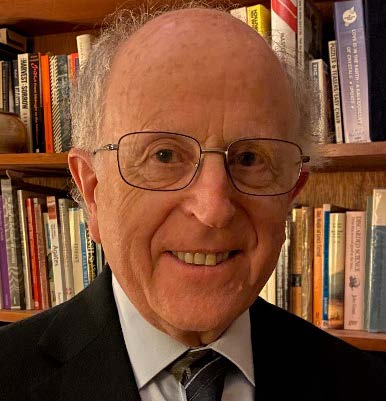 CINT Affiliate and Professor C. Barry Carter named International Metallographic Society (IMS) 2021 Henry Clifton Sorby Awardee
CINT Affiliate and Professor C. Barry Carter named International Metallographic Society (IMS) 2021 Henry Clifton Sorby Awardee
Dr. Carter is also a professor of Materials Science and Engineering at the University of Connecticut in Storrs, a visiting professor at the University of Manchester, and serves as editor-in-chief of the Journal of Materials Science. Prof. Carter earned a Sc.D. from Cambridge University, U.K. in 2005 and a D. Phil. from Oxford University in 1976. His key area of expertise is the microscopy of ceramics, semiconductors, and metals, especially using transmission electron microscopy. More details regarding Prof. Carter’s Sorby Award Lecture — to be presented in junction with IMAT 2021 this September — will appear in a future issue of SlipLines.
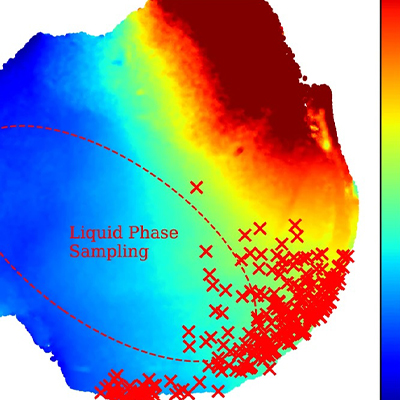
Self-Retraining Machine Learning Tracks Atomic Movement with Speed and Accuracy
Scientific Achievement: To maximize speed and accuracy, CINT users and scientists have demonstrated an automated “active learning” method for training a machine learning (ML) algorithm to iteratively self-evaluate, acquire new data only when a configuration has high ML uncertainty, and then use that data to retrain the model.
Significance: This automated approach to interatomic potential development could transform the field of computational materials discovery, and promises to be an important building block for the study of materials damage and aging from first principles.
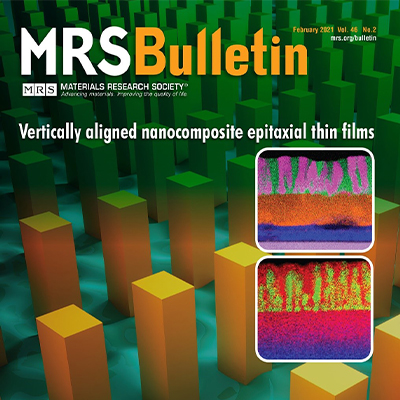
CINT Scientist Aiping Chen, serves as lead Guest Editor for special issue of “Vertically-aligned nanocomposite epitaxial thin films.”(Volume 46, issue 2, February 2021)

First Room-Temperature, Solid-State Operation in the Telecom O- and S-Bands for Single Colloidal Quantum Dot Emitters
Scientific Achievement: We obtain photoluminescence (PL) spectra from individual PbS/CdS QDs (O- and S-bands) by conventional detection methods, and show O-band single-photon emission.
Significance: We solve challenges related to fast PbS QD photo-degradation as a significant step toward establishing PbS-based nanocrystals as reliable sources of telecom-wavelength single photons at room temperature. We provide important insights and guiding principles for the synthesis of efficient and photostable (non-blinking) PbS/CdS QDs in the S-band.
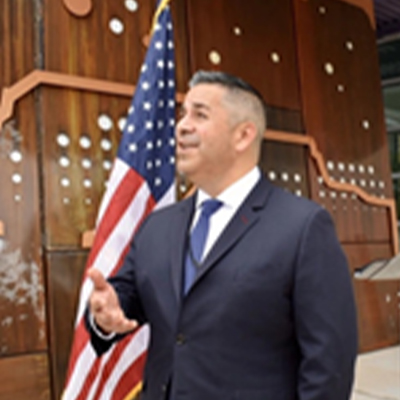
New Mexico Senator Ben Ray Lujan tours Los Alamos and Sandia National Labs
During his visit, Senator Lujan spoke with representatives from the New Mexico press at the Center for Integrated Nanotechnologies, one of
five DOE Nanoscale Science Research Centers.

Matt and his colleagues work was also published in the Nature Communications article:
“Towards single-chip radiofrequency signal processing via acoustoelectric electron–phonon interactions.”

Intrinsic helical twist and chirality in ultrathin tellurium nanowires
Scientific Achievement: This work reveals unique exciton trapping potential landscape of ssDNA-patterned SWCNTs and provides the first demonstration of coupled quantum defect-states in nanotubes.
Significance:

CINT scientists Dale Huber and Ting Shan “Willie” Luk, along with user Erika Vreeland and their team, have won a 2021 Notable Technology Award from the Mid-Continent Region of the Federal Laboratory Consortium for Technology Transfer (FLC) for their technology, “Binary Solvent Diffusion (BSD) for Fabrication of Large Nanoparticles Supercrystals.”

The Kinetics and Thermodynamics of Killing a Quantum Dot
Scientific Achievement: In the search for new robust light-emitting nanocrystals, the reported analysis method enables direct comparisons between differently engineered nanomaterials.
Significance:
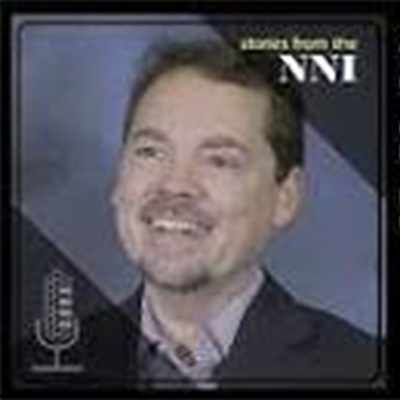
CINT Co-Director Adam Rondinone is guest speaker for “Stories from the NNI” podcast
Adam discussed the critical role DOE-funded user facilities have in nanotechnology research and development. You can listen to the episode here. "Stories from the NNI" podcast episodes are conversations with experts from K–12 and higher education institutions, government, non-profit organizations, or industry who share their perspectives on key research and development advances in nanotechnology and how the NNI has changed the nanotechnology landscape.

The R&D 100 award application describes a patented approach for creating nanoparticles directly from the surfaces of bulk metals. The approach uses ultrasonication that forms cavitation bubbles, which collapse on the metal surface impacting violently and ejecting material which is captured as nanoparticles. The process is conducted in water with a system of inexpensive, non-toxic surfactants to stabilize the nanoparticles and can be used to form nanoparticles of gold, silver, nickel and their alloys. This approach is ideal for upcycling electronic waste to make high-value metal nanoparticle products.

The symposium, held August 3-4, provided a forum for students and recent graduates to showcase their research and broaden their networks. The symposium, which had 80 attendees from DoD, DOE, and academia, consisted of 27 presentations and a 1-hour panel discussion. Presentation topics represented a diverse cross-section of research on the dynamic response of materials to extreme conditions.

New Fluorine-Free Polymer is a Promising Fuel Cell Electrolyte
Scientific Achievement: A new, fluorine-free polymer with controlled nanoscale morphology was shown to have higher proton conductivity than Nafion 117, a state-of-the-art fuel cell membrane.
Significance: The precision architecture and hydrophobic character of the polymer led to well-defined, percolated water channels resulting in high proton conductivity and demonstrating the potential of precision hydrocarbon-based polymers.

CINT affiliate and Sandia bioengineer Susan Rempe featured in a Sandia news release
The story was promoted by the Florida News Times, Phys.org, EurekAlert! (AAAS news release), wateronline.com, newsbreak.com, dailyadvent.com, newswise.com, urallnews.com, 15minutenews.com, and others. The article “Bio-inspired incorporation of phenylalanine enhances ionic selectivity in layer-by-layer deposited polyelectrolyte films.” was featured in May’s edition of Soft Matter. doi.org/10.1039/D1SM00134E

CINT Postdoctoral Researcher Benjamin K. Derby, a Los Alamos National Laboratory Director’s Postdoctoral Fellow, receives Outstanding Presentation Award for his presentation at the annual Science in “3” LANL-wide event.
This event invites the over 500 postdoctoral researchers at Los Alamos National Laboratory to present their work to a general audience in just three minutes. After Ben’s presentation on his work entitled “4D Microscopy: A Tool to Understand and Optimize Materials” made it through the first round, a selection made by his Associate Laboratory Director for Physical Sciences, he presented his work in the final round with over two dozen other well-regarded postdoctoral researchers. The presentations were made in front of Laboratory Scientists and Fellows, University of New Mexico staff, heads of private industry, and professors from around the country with a wide range of backgrounds. Ben’s presentation received the highest honor for this competition.
 Bright and stable light-emitting diodes made with perovskite nanocrystals stabilized in metal–organic frameworks
Bright and stable light-emitting diodes made with perovskite nanocrystals stabilized in metal–organic frameworks
Scientific Achievement: Discovery of a method to fabricate perovskite nanocrystals in metal organic framework (MOF) thin films to stabilize the nanocrystals and preserve their bright emission for light emitting diodes (LEDs).
Significance: Perovskite nanocrystals exhibit outstanding light emission properties but are unstable. This work provides a viable path to stabilize the crystal’s properties with a MOF matrix that addresses this stability problem for LEDs.
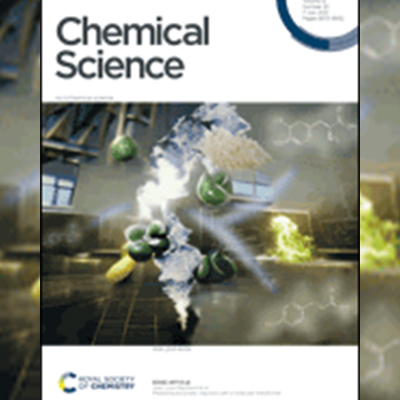
Thermodynamics of ion binding and occupancy in potassium channels
Scientific Achievement: Molecular dynamics simulations with polarizable force fields enabled reconciliation of rapid, selective ion transport mechanism with crystal structure data.
Significance: Potassium transport proteins demonstrate both fast and selective ion transport, which is critical to health (e.g., nerve cell signaling, targets for toxins and therapeutics) and inspirational for designing ion exchange membranes for more efficient water purification and metal ion harvesting.
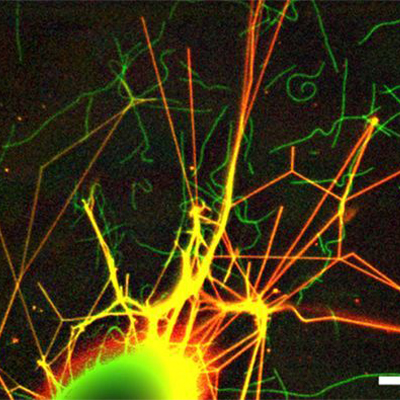
CINT Collaborates with the Bradbury Science Museum (BSM) for a Nanotechnology Day Event
The event included a hundred-billion nanometer march, signage with nanotechnology fun facts, giveaways, and CINT representation during the event. Over 260 museum visitors participated in the event.

High-Performing Layered Supercapacitor via Scalable Electrochemical Deposition Method
Scientific Achievement: Demonstrated a facile and scalable electrochemical deposition method for wafer-scale synthesis of quasi-layered tungstate doped-polypyrolle (TALPy) supercapacitor electrodes.
Significance: TALPy film exhibits high gravimetric density and excellent volumetric performance, exceeding many carbon- and polymer-based film electrodes. Cryogenic focused ion beam (cryo-FIB) milling and cryogenic TEM revealed the internal structures of the film.
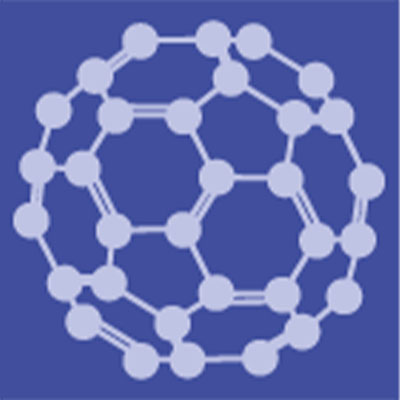
Electronic Charge Transfer is at the Origin of Oscillatory Segregation Behavior in Ni-Cr Alloys (TALPy) supercapacitor electrodes.
Scientific Achievement: Using ab initio simulations, we revisit the previously held belief that elastic strain release at the surface dictates surface segregation. We reveal that instead, electron charge transfer and ionic-like bonding interactions are at the origin of an oscillatory Cr segregation behavior near the surface of Ni-Cr alloys.
Significance: Owing to the importance of surface chemistry in catalysis, oxidation, corrosion, it is important to understand how surface properties are modified by the presence of impurities near alloy surfaces.

CINT Scientist Sergei Tretiak receives Humboldt Research Award for senior scientists
Every year, the Alexander von Humboldt Foundation grants up to 100 Humboldt Research Awards to internationally-leading researchers of all disciplines from abroad in recognition of a researcher’s lifetime achievements and whose fundamental discoveries, new theories, or insights have had a significant impact on their own discipline; recipients are expected to continue producing cutting-edge achievements in the future. (Germany, 2021) More about the award is available here: Humboldt Research Award.

CINT Scientist Rohit Prasankumar named 2022 Optica Fellow
Rohit Prasankumar named a 2022 Optica Fellow for his significant contributions to understanding ultrafast phenomena in quantum materials, particularly strongly correlated electron systems, semiconductor nanostructures, and topological materials.
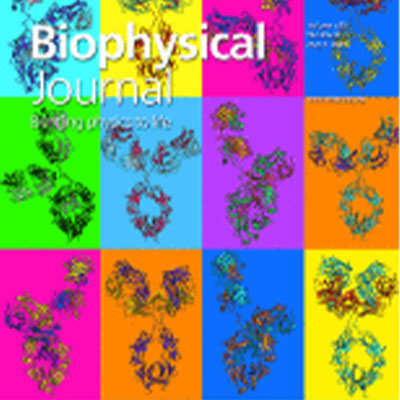
Published Research by CINT Affiliate and Sandia Bioengineer Susan Rempe Selected as a Biophysical Journal Outstanding Paper of 2021
The award for Susan’s article, “Channelrhodopsin C1C2: Photocycle kinetics and interactions near the central gate” will be presented at the Biophysical Society meeting in February, 2022.
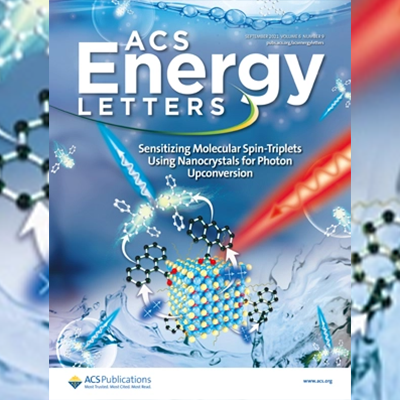
Scientific Achievement: Integration of a new, functionalized fullerene material in perovskite solar cells to protect devices from moisture.
Significance: Efficiency of perovskite photovoltaics is growing rapidly but their operational stabilities have not kept pace. Integrating functionalized nano-materials in solar cells addresses this bottleneck and pushes perovskite PV technology towards commercialization.

Simulation of Ultrafast Multidimensional Nonlinear X-ray Spectroscopy of Molecules
Scientific Achievement: Non-linear X-Ray signal (TRUECARS) of a synthetic heterodimer was simulated and the signatures of coherent vibronic dynamics are identified.
Significance: Several algorithms enabling stat of the arts photoexcited dynamics simulations were implemented in BES NWChem code.